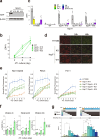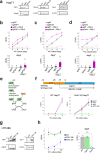Identification of genes supporting cold resistance of mammalian cells: lessons from a hibernator
- PMID: 39300059
- PMCID: PMC11413375
- DOI: 10.1038/s41419-024-07059-w
Identification of genes supporting cold resistance of mammalian cells: lessons from a hibernator
Abstract
Susceptibility of human cells to cold stress restricts the use of therapeutic hypothermia and long-term preservation of organs at low temperatures. In contrast, cells of mammalian hibernators possess remarkable cold resistance, but little is known about the molecular mechanisms underlying this phenomenon. In this study, we conducted a gain-of-function screening of genes that confer cold resistance to cold-vulnerable human cells using a cDNA library constructed from the Syrian hamster, a mammalian hibernator, and identified Gpx4 as a potent suppressor of cold-induced cell death. Additionally, genetic deletion of or pharmacological inhibition of Gpx4 revealed that Gpx4 is necessary for suppressing lipid peroxidation specifically under cold in hamster cell lines. Genetic disruption of other ferroptosis-suppressing pathways, namely biopterin synthesis and mitochondrial or plasma membrane CoQ reduction pathways, also accelerated cold-induced cell death under Gpx4 dysfunction. Collectively, ferroptosis-suppressing pathways protect the cells of a mammalian hibernator from cold-induced cell death and the augmentation of these pathways renders cold resistance to cells of non-hibernators, including humans.
© 2024. The Author(s).
Conflict of interest statement
The authors declare no competing interests.
Figures





Similar articles
-
Cold resistance of mammalian hibernators ∼ a matter of ferroptosis?Front Physiol. 2024 Apr 25;15:1377986. doi: 10.3389/fphys.2024.1377986. eCollection 2024. Front Physiol. 2024. PMID: 38725569 Free PMC article. Review.
-
Hepatic resistance to cold ferroptosis in a mammalian hibernator Syrian hamster depends on effective storage of diet-derived α-tocopherol.Commun Biol. 2021 Jun 25;4(1):796. doi: 10.1038/s42003-021-02297-6. Commun Biol. 2021. PMID: 34172811 Free PMC article.
-
The CoQ oxidoreductase FSP1 acts parallel to GPX4 to inhibit ferroptosis.Nature. 2019 Nov;575(7784):688-692. doi: 10.1038/s41586-019-1705-2. Epub 2019 Oct 21. Nature. 2019. PMID: 31634900 Free PMC article.
-
Mitochondrial rescue prevents glutathione peroxidase-dependent ferroptosis.Free Radic Biol Med. 2018 Mar;117:45-57. doi: 10.1016/j.freeradbiomed.2018.01.019. Epub 2018 Jan 31. Free Radic Biol Med. 2018. PMID: 29378335
-
Targeting GPX4 in human cancer: Implications of ferroptosis induction for tackling cancer resilience.Cancer Lett. 2023 Apr 10;559:216119. doi: 10.1016/j.canlet.2023.216119. Epub 2023 Mar 8. Cancer Lett. 2023. PMID: 36893895 Review.
Cited by
-
Cold resistance of mammalian hibernators ∼ a matter of ferroptosis?Front Physiol. 2024 Apr 25;15:1377986. doi: 10.3389/fphys.2024.1377986. eCollection 2024. Front Physiol. 2024. PMID: 38725569 Free PMC article. Review.
-
Multi-species genome-wide CRISPR screens identify conserved suppressors of cold-induced cell death.bioRxiv [Preprint]. 2024 Nov 19:2024.07.25.605098. doi: 10.1101/2024.07.25.605098. bioRxiv. 2024. PMID: 39091747 Free PMC article. Preprint.
References
-
- Geiser F. Hibernation. Curr Biol 2013;23:R188–93. - PubMed
-
- Geiser, F. Hibernation: Endotherms. In: eLS. John Wiley & Sons, Ltd: Chichester; 2011. 10.1002/9780470015902.a0003215.pub2.
-
- Carey HV, Andrews MT, Martin SL. Mammalian hibernation: cellular and molecular responses to depressed metabolism and low temperature. Physiol Rev 2003;83:1153–81. - PubMed
MeSH terms
Substances
Grants and funding
- 20H05766/Ministry of Education, Culture, Sports, Science and Technology (MEXT)
- 20H05765/Ministry of Education, Culture, Sports, Science and Technology (MEXT)
- 20B303/Ministry of Education, Culture, Sports, Science and Technology (MEXT)
- 18K19321/Ministry of Education, Culture, Sports, Science and Technology (MEXT)
- 23H04940/Ministry of Education, Culture, Sports, Science and Technology (MEXT)
LinkOut - more resources
Full Text Sources

